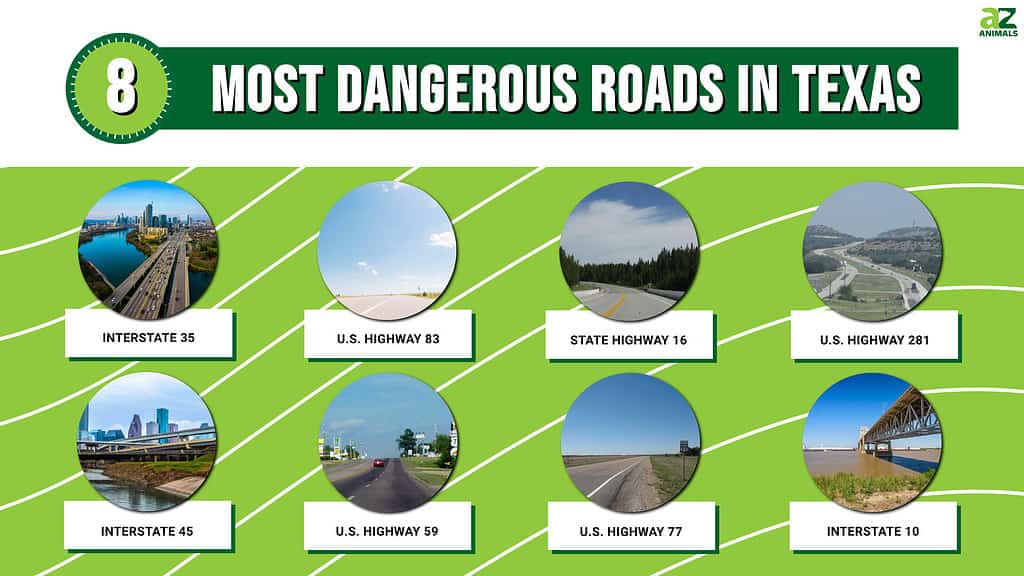
Ever wondered about the most dangerous roads in Texas? Fasten your seatbelt because you’re in for a thrilling ride as we explore the Lone Star State’s riskiest routes. They might be vital arteries connecting the state, but these roads, from bustling interstates to seemingly serene highways, have a reputation that’s a bit on the wild side.
So, buckle up and keep your eyes wide open. Let’s dive deep into the nitty-gritty of what makes these eight Texas roads the most dangerous and why caution is the name of the game when you tackle these treacherous tracks.
Ready? Let’s hit the road!
1. Interstate 35

Aerial drone views above the Colorado River and Interstate 35 in Austin, TX.
©Roschetzky Photography/Shutterstock.com
Welcome to Interstate 35—the highway that never sleeps! Spanning the entire length of the Lone Star State from Laredo at the Mexican border, slicing through the heart of major cities like San Antonio, Austin, and Dallas, all the way up to the Red River at the Oklahoma border. But this crucial artery of Texas isn’t just known for its sheer length and importance to the state’s transportation; it also has an infamous reputation.
Why It’s Dangerous
Now, let’s delve into why I-35 has made our list. It’s not just about the road’s tremendous length. The combination of heavy traffic flow, high-speed limits, and constant construction works plays a significant role in the road’s hazard quotient.
- Heavy Traffic: I-35 carries more than a hefty load of Texas traffic. With millions of vehicles, including large trucks, navigating its lanes daily, the risk factor escalates. Couple that with the fact that it’s a critical interstate freight route, and you’ve got yourself a recipe for high potential danger.
- Speed Limits: Everything’s bigger in Texas, including the speed limits. On I-35, you’ll often find cars whizzing past at 70 miles per hour and, in some parts, even higher. This high-speed ballet often leads to fatal accidents, especially when coupled with distractions or poor weather conditions.
- Construction Zones: I-35 seems to be in a perpetual state of construction. With detours, abrupt lane changes, and constricted road space, drivers must be extra cautious. Unfortunately, not everyone is, and these construction zones often become accident hotspots.
A Snapshot of Notable Accidents
The dangers of I-35 aren’t just theoretical—they’ve claimed lives and caused countless injuries over the years. Some accidents have been so catastrophic they’ve etched their mark on the highway’s history.
For instance, in 2020, a tragic 133-vehicle pile-up occurred near Fort Worth during a bout of freezing rain. This accident alone resulted in six fatalities and dozens of injuries. This incident serves as a stark reminder of the potential dangers lurking on this extensive stretch of roadway.
2. U.S. Highway 83

US Route
183 has endpoints in Presho (South Dakota) and Refugio (Texas).
©Arina P Habich/Shutterstock.com
Hold on tight as we take you on a journey down U.S. Highway 83, dubbed the “Road to Nowhere.” This long, lonely road runs north to south, all the way from the Canadian border down to the Rio Grande in Brownsville, Texas. While its stunning views of Texas landscapes might mesmerize you, its danger quotient is equally captivating.
The Perils of Highway 83
So, what makes Highway 83 one of Texas’ most dangerous roads? Its winding path, isolated stretches, and high-speed limits create a perfect storm for potential road hazards.
- Winding Route: Highway 83 isn’t your straight, flat, typical Texas highway. It’s a winding path that cuts through some of the most diverse terrains in Texas. The sudden turns and unpredictable paths often catch drivers off guard, leading to unfortunate accidents.
- Isolation: Highway 83, especially in the Texas Hill Country, is quite remote. The sparse population means fewer resources in case of an emergency. If an accident occurs, the response time can be longer, making the situation more dangerous for those involved.
- Speed Limits: Similar to other Texas roads, Highway 83 has high-speed limits. The combination of high speeds with winding roads and potentially delayed emergency response time is a recipe for heightened risk.
Unforgettable Accidents
Highway 83 has seen its fair share of unfortunate incidents over the years. These accidents underline the dangers of this road and the necessity for caution.
Take the tragic incident in 2017 near Uvalde, where a head-on collision between a pickup truck and a church minibus resulted in 13 fatalities. This devastating accident put the dangers of Highway 83 on the national stage.
3. State Highway 16

U.S. Highway 16 (US 16) is an east-west United States Numbered Highway between Rapid City, South Dakota, and Yellowstone National Park in Wyoming.
©RaksyBH/Shutterstock.com
Buckle up and join us as we cruise down State Highway 16, the longest state highway in Texas. Stretching from the southernmost tip of Zapata all the way to the Oklahoma border, this roadway travels through a mix of bustling cityscapes and serene country landscapes. However, this diverse and lengthy road demands respect for its hidden dangers.
The Hidden Hazards of Highway 16
Wondering what makes Highway 16 a treacherous trek? Its enormous length, high-speed limits, and diverse traffic converge to create risky road conditions.
- Length and Fatigue: As Texas’ longest state highway, fatigue can set in during long drives on Highway 16. Texas drivers might lose focus on the road, leading to dangerous situations.
- High Speeds: Texas is known for its high-speed limits, and Highway 16 is no exception. The thrill of speeding can quickly turn into danger, particularly when drivers are unfamiliar with the road’s layout.
- Diverse Traffic: From semi-trucks to motorcycles, all types of vehicles use Highway 16. With varying speeds and sizes, this diversity can lead to unforeseen circumstances and, unfortunately, accidents.
Tragic Memories
Highway 16’s notoriety doesn’t come unfounded; it has witnessed a series of tragic incidents. These accidents are somber reminders of why we should take this highway’s dangers seriously.
In 2019, a horrific collision between a passenger car and an 18-wheeler near Tilden resulted in multiple fatalities. The incident spotlighted the risk factors present on Highway 16, particularly the challenge of sharing the road with large commercial vehicles.
4. U.S. Highway 281
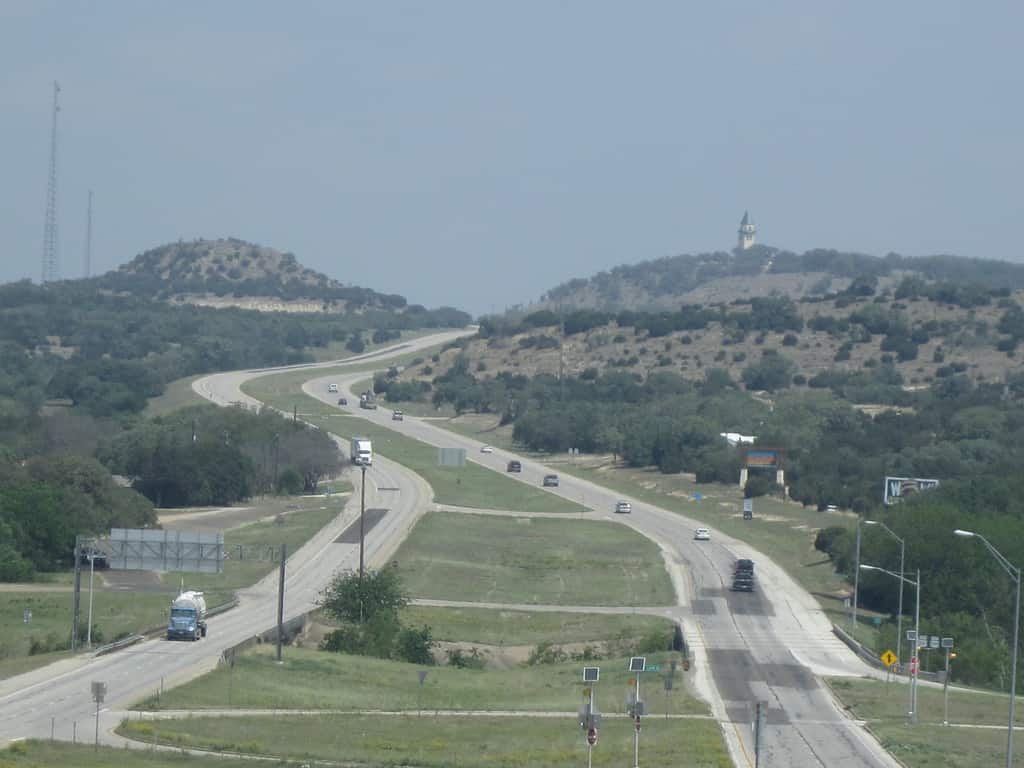
At 1,875 miles, U.S. Highway 281 is the longest continuous three-digit U.S. Route.
©Billy Hathorn / CC BY-SA 3.0 – License
Pack your bags and fasten your seatbelts as we embark on a trip down U.S. Highway 281. This crucial roadway traces a north-south path right through the heart of Texas. It’s a critical link for many communities, but don’t let that fool you. The dangers lurking on this highway are as real as the landscapes it traverses.
Perils of Highway 281
So, what makes Highway 281 a risky ride? Let’s uncover the truth beneath its seemingly ordinary facade. A mix of high-speed limits, frequent wildlife crossings, and narrow lanes makes this highway one to approach with caution.
- High Speeds: Speed is a significant factor on Highway 281. With vehicles racing along at high speeds, the margin for error is slim, and the risk of serious accidents becomes high.
- Wildlife Crossings: If you’re driving on Highway 281, especially around dusk or dawn, watch out for wildlife! The highway cuts through rural and semi-rural areas, and animal crossings are common. An unexpected animal encounter can result in serious accidents.
- Narrow Lanes: Parts of Highway 281, especially in more rural areas, are known for their narrow lanes. These tight corridors can make passing other vehicles particularly risky.
Reminders of the Risks
The risk factor associated with Highway 281 is not just theoretical. It has been the site of several significant accidents over the years.
One such accident occurred in 2020 near Burnet, where a multi-vehicle collision resulted in multiple fatalities and several serious injuries. It was a grim reminder of the need for caution when traveling on this road.
5. Interstate 45
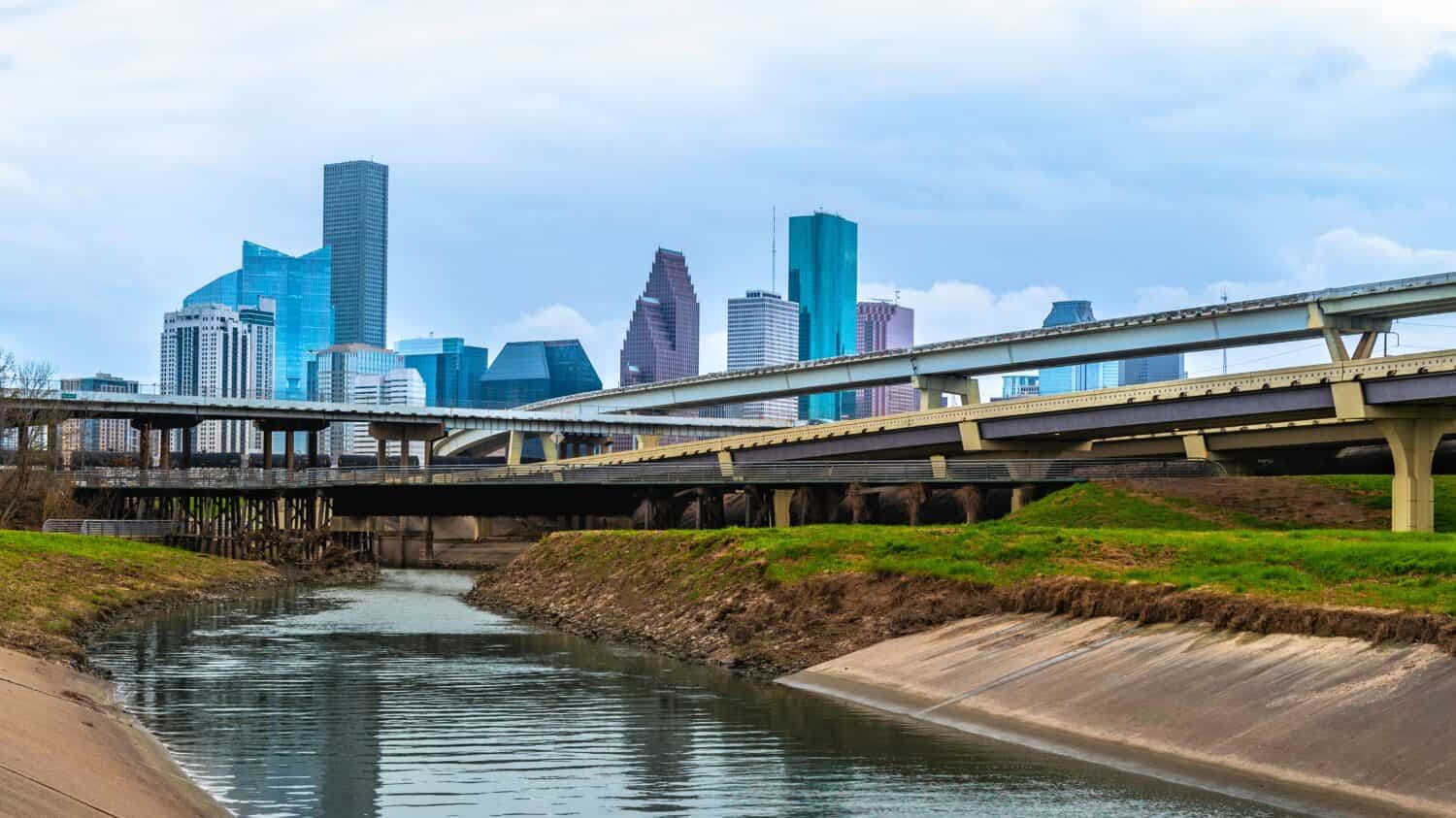
White Oak Bayou Greenway under Interstate 45 Freeway in Texas.
©NayaDadara/Shutterstock.com
Brace yourself for a journey down Interstate 45 – a road where hustle and bustle meets hazard. This important stretch connects two major Texas cities—Dallas and Houston. However, beneath its urban utility lies a reputation that’s not as sparkling. Let’s get up close and personal with the dangers of I-45.
The Risks of Riding on I-45
Why does I-45 rank as a risky road? High traffic volumes, ever-changing weather, and its role as a hurricane evacuation route conspire to make it a hotbed for hazards.
- Traffic Congestion: I-45 doesn’t do ‘quiet.’ With bumper-to-bumper traffic in peak hours, the risk of rear-end collisions and pile-ups soars.
- Unpredictable Weather: Texas weather has a mind of its own. When heavy rains, fog, or ice hit I-45, the conditions can quickly become treacherous.
- Hurricane Route: I-45 serves as a primary hurricane evacuation route. During hurricane season, the highway can become heavily congested, leading to slower movement and increased accident potential.
The Human Toll
I-45 isn’t a stranger to serious accidents. In fact, some of the most tragic incidents have happened right here, providing grim evidence of the highway’s inherent dangers.
One of the most heartbreaking was a bus crash in 2016 near Willis that claimed 17 lives. This accident served as a chilling reminder of the risks that come with traversing I-45.
6. U.S. Highway 59
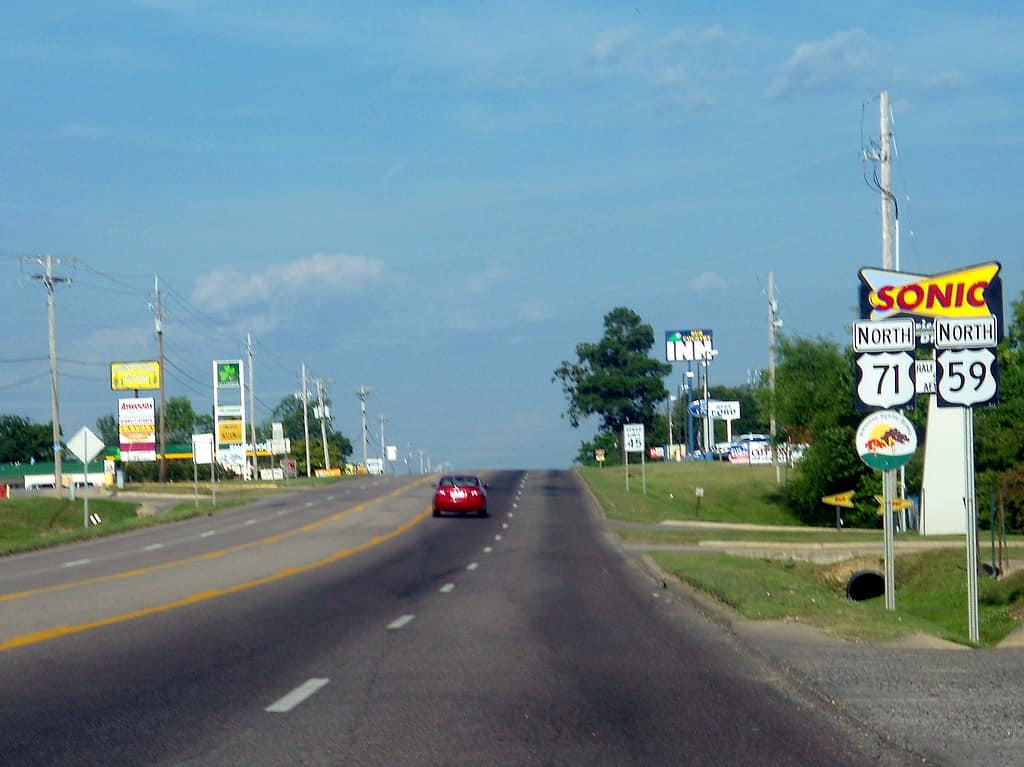
US 59 is now a border-to-border route, part of the NAFTA Corridor Highway System.
©Brandonrush / CC BY-SA 3.0 – License
Get ready for a deep dive into U.S. Highway 59, often known as the ‘Lifesaver.’ This roadway carves a path from the Canadian border all the way down to Mexico, traversing the width of Texas on its way. But this vital vein of the state’s transportation system is more than just a lifeline; it’s a road that’s seen its share of life-altering events.
The Perilous Path of Highway 59
What makes Highway 59 a road of risks? Its dense traffic, high-speed limits, and frequent lane changes mix together to form a dangerous cocktail for drivers on these Texas roads.
- Heavy Traffic: Highway 59’s role as a major artery means it’s often teeming with vehicles. This density increases the chances of collisions, particularly during peak hours.
- High-Speed Limits: It’s not uncommon to see speedometers inching above the 70-mile-per-hour mark on Highway 59. Speed can thrill, but it can also kill. The risk of deadly accidents increases with speed.
- Frequent Lane Changes: On Highway 59, the game of lanes is constantly in play. With regular entry and exit points, drivers often switch lanes, sometimes abruptly. This can result in unexpected accidents.
The Unfortunate Accidents
Highway 59’s dangers aren’t just a figment of imagination; they’ve manifested in several tragic accidents over the years.
For instance, in 2019, a fatal accident near Victoria claimed four lives. It served as a grim reminder of the risks that lie on the stretches of Highway 59.
7. U.S. Highway 77

US Highway 77 is a major north-south United States Numbered Highway that extends for 1,305 miles (2,100 km) in the central United States.
©Rdhansen / CC BY-SA 4.0 – License
Hop in for a ride down U.S. Highway 77, fondly known as the “Main Street of Texas.” Traversing from Oklahoma to Mexico, it cuts right through the heart of the Lone Star State. But as picturesque as this highway may be, it has a darker side that requires a deeper look.
The Hidden Hazards of Highway 77
What’s lurking beneath the surface of Highway 77’s charm? High-speed limits, unpredictable weather, and heavy truck traffic form a trifecta of potential hazards on this crucial highway.
- High-Speed Limits: As with many Texas highways, speed limits on Highway 77 can reach up to 75 miles per hour. Such high speeds can easily lead to severe, if not fatal, accidents if drivers are not careful.
- Unpredictable Weather: Highway 77 has a reputation for unpredictable weather, including sudden fog or heavy rain. These conditions can make driving particularly hazardous, especially for those unfamiliar with such weather patterns.
- Heavy Truck Traffic: Being a significant highway, 77 sees plenty of commercial trucks. Their sheer size and weight, coupled with high speeds, can make any collision a serious one.
Tragic Incidents
Unfortunately, Highway 77 has borne witness to numerous tragic accidents over the years. These heartbreaking incidents serve as stark reminders of the Texas road’s inherent dangers.
One particularly severe accident occurred in 2018 near Refugio, where a head-on collision led to multiple fatalities. The incident underscored the risks associated with high-speed driving on this highway.
8. Interstate 10
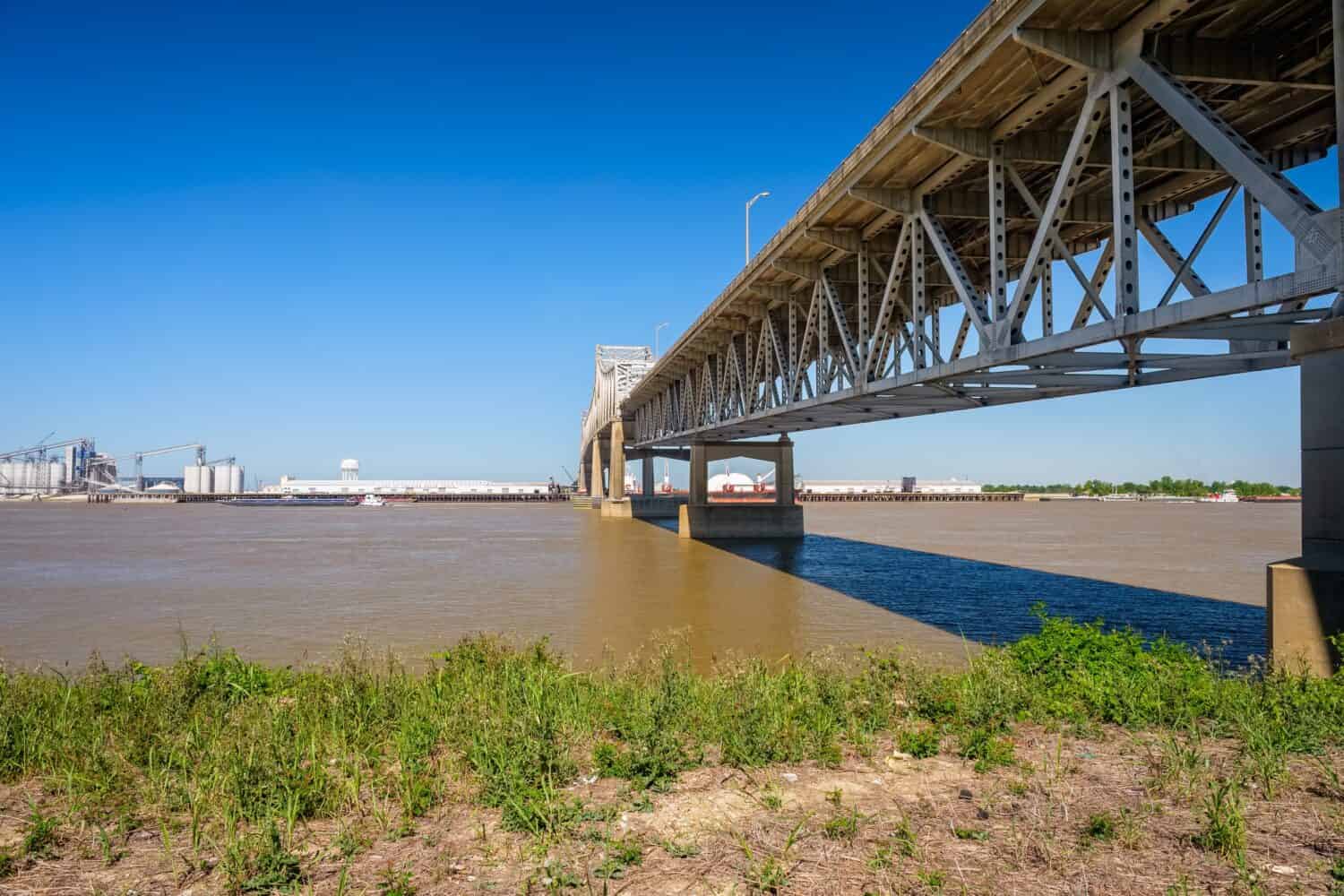
Stunning view of the Baton Rouge bridge on Interstate 10 over the Mississippi River in Louisiana.
©Fotoluminate LLC/Shutterstock.com
Get set for a thrilling ride along Interstate 10, a transcontinental pathway that connects the Atlantic to the Pacific, cutting a significant swath through Texas. But don’t let its sunsets and landscapes distract you – I-10 has a reputation that’s a bit less scenic.
Dangers Lurking on I-10
What’s the danger of dealing with I-10? It’s a mixed bag of heavy traffic, frequent construction, and unexpected weather changes that make this highway a risky ride.
- Heavy Traffic: I-10 carries a massive volume of traffic. From daily commuters to long-haul truckers, all types of vehicles jostle for space. High traffic density often leads to collisions.
- Construction Zones: Interstate 10 is no stranger to construction work, which can cause sudden lane closures and traffic shifts. These can catch drivers off guard, increasing the risk of accidents.
- Weather Changes: From blazing heat to sudden storms, I-10 sees it all. These abrupt weather changes can make driving conditions challenging, contributing to the road’s hazard quotient.
I-10’s Unfortunate History
I-10’s reputation as a dangerous road in Texas is not unearned; it’s a tragic reality underscored by a series of accidents.
For instance, the horrific multi-vehicle pile-up near Beaumont in 2012, which involved more than 100 vehicles and led to multiple fatalities, was a grim reminder of the perils that I-10 can present.
Summary of 8 Most Dangerous Roads in Texas
Here are the 8 Most Dangerous Roads in Texas:
| Rank | Roads |
|---|---|
| 1 | Interstate 35 |
| 2 | U.S. Highway 83 |
| 3 | State Highway 16 |
| 4 | U.S. Highway 281 |
| 5 | Interstate 45 |
| 6 | U.S. Highway 59 |
| 7 | U.S. Highway 77 |
| 8 | Interstate 10 |
Key Takeaways
Our journey down Texas’s most dangerous roads has come to a close. But the ride doesn’t end here. Armed with our new insights, it’s up to us to tackle these tricky turns and risky routes with the utmost caution. Remember, the beauty of Texas’s vast landscapes is best enjoyed at a pace that keeps us and our fellow drivers safe. So let’s keep our eyes on the road, our hands on the wheel, and our focus on safety.
The photo featured at the top of this post is © Janece Flippo/Shutterstock.com
Thank you for reading! Have some feedback for us? Contact the AZ Animals editorial team.






